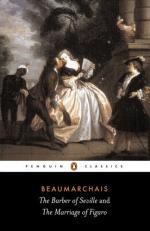|
This section contains 300 words (approx. 1 page at 400 words per page) |

|
Beaumarchais's The Marriage of Figaro, first produced in 1784, reintroduces many of the characters from The Barber of Seville. In this play, Figaro, now manservant to Count Almaviva, is betrothed to Suzanne, maid to the Countess. However, Almaviva attempts to thwart these plans out of his own desire for Suzanne.
Many of the plays of Molière, the great French comedic dramatist, share similar themes with The Barber of Seville. His Don Juan (1665) features the universal symbol of libertinism (a state of unrestraint or freethinking). Molière's Don Juan is particularly rebellious, disclaiming all types of obligation, while his servant is portrayed as his opposite and as one who passes judgment on Don Juan privately. The School for Wives (1662) concerns a pedant who decides to marry his ward, Agnes. These plans are thwarted when a young man falls in...
|
This section contains 300 words (approx. 1 page at 400 words per page) |

|




